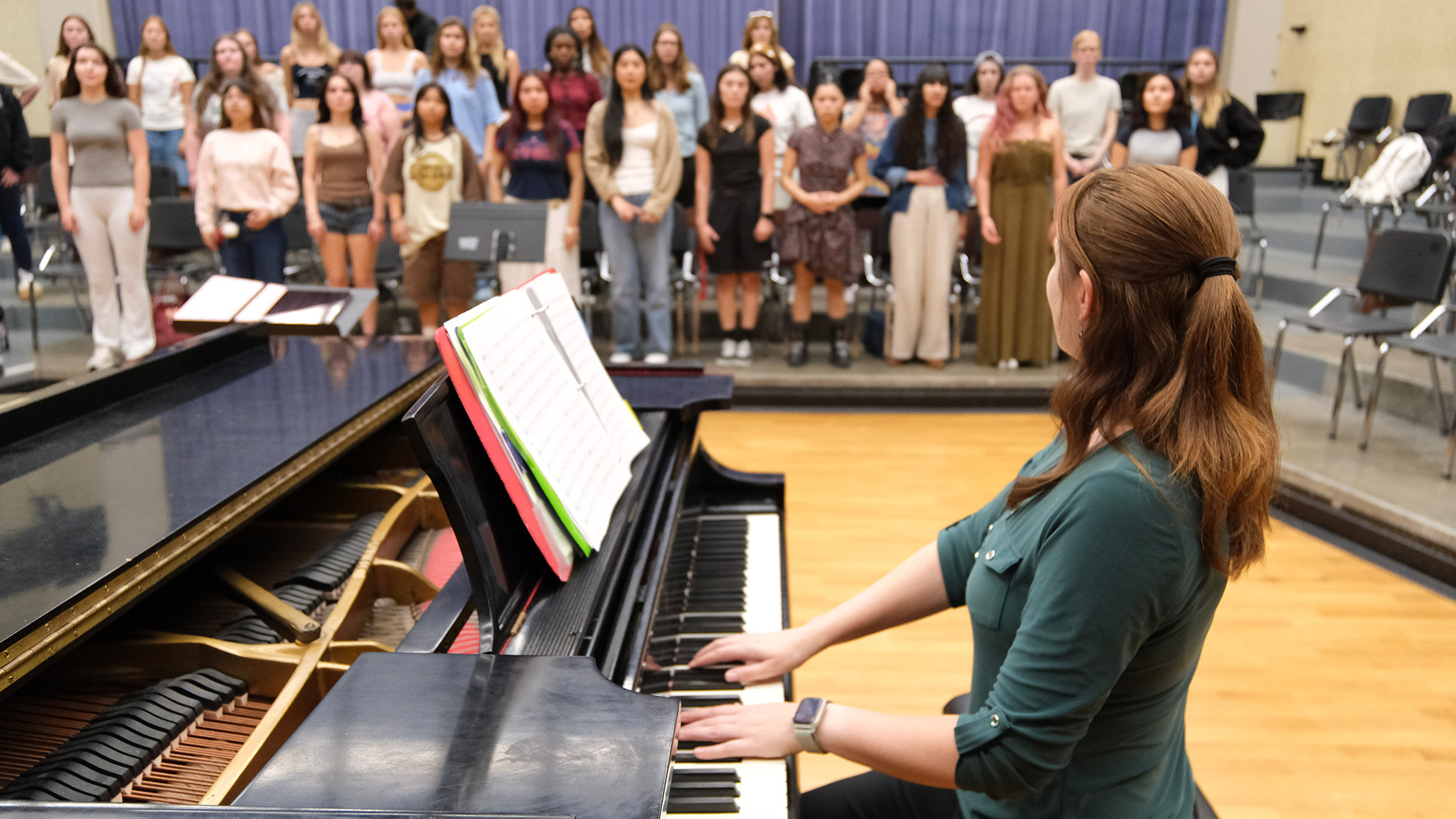Vascularize This!
SDSU research interns are using stem cells to create blood vessels in bones and kidneys.

Despite a whirlwind morning scrambling to repair his life-giving dialysis machine, San Diego State University biology major David Anjakos maintained a positive outlook on his later-than-usual commute to the Sanford Consortium for Regenerative Medicine. Once in his lab coat, gloves, and goggles, he’d get to work on stem cell research that could lead to growing a functioning kidney and helping nearly 100,000 people on a transplant list, himself included.
Anjakos is one of nine SDSU undergraduate and graduate students in the Bridges to Stem Cell Research Internship Program (BSCRIP). The program is funded by the California Institute for Regenerative Medicine (CIRM), created by a 2004 ballot measure to support stem cell research in the state.
“The program is designed to teach the workforce of tomorrow in regenerative medicine,” said Ralph Feuer, SDSU biology professor and director of BSCRIP. “Stem cells are the future of medicine and we know there’s a need for students to be trained to discover these new therapies.”
BSCRIP students carry out research projects at several nearby sites that focus on using stem cells to treat diseases resulting from genetic mutations.
In the past 12 years, over 100 students have successfully completed the paid research internship while being enrolled full-time. They have gone on to be successful medical doctors, professors, pharmacists, biotechnology industry leaders or research technicians in the lab in which they started.
After finishing his BSCRIP position at the Sanford Consortium on the University of California San Diego campus, Anjakos plans to start a Ph.D. program so he can apply all he has learned from creating approximations of the Wnt protein that is essential for turning stem cells into organs with functioning vessels. But he did not always envision himself as a scientist.
“Bridges to Stem Cell Research program has really been a huge opportunity for me to get into science, to practice science, to practice the skills that I’ll need,” said Anjakos. “It has really helped me in my confidence in my ability to do science.”
“It is amazing how much the students grow,” said John Mokili, BSCRIP’s program coordinator. “Some of them come in not knowing much about research or presenting. At the end of the program, we can call them the experts who are advancing their fields forward.”
Inspired by community
Katia Luna has always felt a strong connection to older generations.
“I really love to ask them about how they feel, what’s going on in their lives,” she said.
A lack of affordable options for older people needing knee replacement surgery in Jalisco, Mexico, where she grew up, inspired Luna to pursue a career in orthopedics. For her, majoring in anthropology as a pre-med was a natural fit.
“Anthropology is the study of the human in all senses,” she said. “In order to be a doctor, I have to understand not only the biological part of the patient, I have to understand the environment of the patient, the cultural background of the patient."
Through BSCRIP, Luna interned in a lab at the Shiley Center for Orthopaedic Research and Education in La Jolla. She tested methods for growing engineered bone tissue from stem cells under several different conditions, tackling the challenge of replicating bone’s complex network of blood vessels. Such tissues could eventually be used to treat bone defects without invasive surgery.
In addition to her research and studies, Luna is a member of Flying Samaritans, a club at SDSU that holds free medical clinics for low-income people in Mexico. After med school, she hopes to give back to her home state of Jalisco by volunteering her services, especially among the older population.
Confidence through collaboration
In the midst of the COVID-19 pandemic, Aaliyah Staples-West’s friend sent her an Instagram post about BSCRIP and she decided to apply just because it was one thing she could have some control over in such a tumultuous time.
But she was nervous because of negative experiences she had in her classes.
“I thought I wasn’t even capable of doing wet lab work in stem cell research specifically because I had trouble reading protocols and getting experiments done on time,” Staples-West said.
Over the course of a year, she acquired all the necessary skills to model the blood vessels in the brain using stem cells from patients with Cockayne syndrome, a neurodegenerative disorder characterized by premature aging and absence of myelination around neurons, among other symptoms.
Day-in and day-out, she would provide nutrient-dense media to pluripotent stem cells until they developed into neurons while also running experiments on other cells to turn them into a functioning inner lining of blood vessels.
“This one-year experience has taught me so much about myself,” she said. “I’m falling in love with research more and more because of this internship.”
Upon completing her final presentation about her project, Staples-West plans to earn her Ph.D., and potentially a medical degree as well. But first she will use the techniques she’s learned to work in industry, rewriting the methods for differentiating stem cells.
Even more valuable though is her newfound confidence and her willingness to admit when she does not know something and ask questions, which she attributes to having such a collaborative and supportive mentor and lab environment.
“In science, it’s very important that we all are growing intellectually,” Staples-West said. “And so, if we can collaborate and not compete against one another, then we can all get to where we need to be in life and also just succeed as one.”



